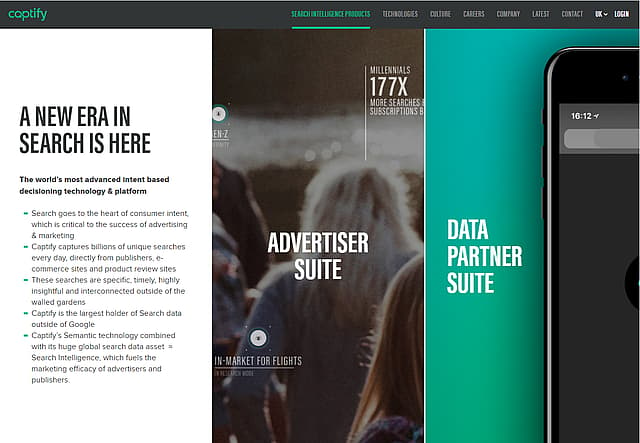2021 Marketing Trends: SaaS Companies.
19.01.2021
The global SaaS industry is expected to be worth $60.36 billion by 2023, an increase of 9% in the next four years. The corporate mobile market within SaaS is likely to be worth $7.4 billion by 2021. Whilst that’s good news for the tech giants that dominate, smaller SaaS businesses have the challenge of gaining and retaining market share. In this blog, we’ll look at a few current market trends, and identify ways of capitalising on the evolving landscape in 2021.
1. Increased pressure on pricing.
According to the same survey 38% of SaaS companies charge based on usage. Half of all SaaS companies depend on user-based pricing for profit. Less than a third, 31%, of SaaS businesses provide a small discount.
Set against an industry backdrop of rising CAC in 2020, getting pricing and targeting right is imperative. Pitch high and you risk scaring off would be customers. Too low and you devalue your product positioning in your market and struggle with margins.
GrooveHQ is a small SaaS US based ticketing system looking to take on the likes of Zendesk. They spent a lot of time surveying customers and trying to get pricing right. Eventually they settled on a simplified pricing structure, bundling usage into the product and competing not on features but on price. This resulted in 358% increase in trial sign ups and 25% revenue growth.
SaaS giants like Hubspot and Salesforce increasingly compete on price. With such similar sounding feature sets both companies are at pains to demonstrate economies of scale as key part of their marketing messages.
Getting pricing to value strategy right is an artform, and 2020/21 provides the perfect opportunity to review yours.
2. An authentic customer centric focus.
Many SaaS companies claim to be customer focussed but how does your SaaS business act when the chips are down? Acknowledging the current climate and adapting your pricing plans is one way to be more helpful.

Some tech providers that traditionally relied on annual billing to achieve sustainable ARR have reverted to temporary monthly payment plans. Others have offered discounted deals, particularly when driving advocacy or looking for introductions to other business units of existing customers..
Being customer centric is a cultural mindset and one that all good SaaS businesses should be built upon. This year provides an excellent opportunity to look at how you help your customers, and perhaps redesign ways your service meets their needs. This could be investing time in your support staff, in training, in auditing and improving your knowledge base, investing in complimentary tech or implementing a customer success strategy.
A short term investment now is likely to pay dividends in the medium to long term.
3. Value based marketing for SaaS companies.
Defining your value and standing out from the crowd remain critical success factors in today’s SaaS marketplace. Communicating features and benefits is common marketing and sales practice but helping a customer understand the true value they will get from using your service is trickier.
Integrations have typically been a way that SaaS businesses have added value to their stack, but the benefit to the end customer is not always obvious.
A few explainer videos or blog posts can greatly benefit customers who prefer to self serve. Better still, hold webinars for customers and prospects that demonstrate key feature releases.
In recent years, there has been a significant shift in appetite for a more consultative approach from software vendors. Customer success managers help customers get the most out of their purchase, help provide actionable insights and prove ROI, and see greater retention rates and opportunities for upselling and cross selling complimentary features.
4. Marketing around Use Cases.
A key but unsurprising trend is that vertical specific SaaS companies have suffered most. Most SaaS products set out with a particular focus in mind. As the product develops and adoption increases, customers often find new and innovative uses.
Now is a great time to review how your customers are using your product, identify trends and ensure your marketing covers emerging use cases. It might also be time to diversify your offer.
A good example of this is UK call tracking service Infinity. Infinity started with a marketing and sales use case for their product. The aim was to optimise digital marketing efforts and sales conversions by identifying which search terms and web pages were causing the phone to ring. The results would be higher CTA conversion rate and sales insights. As the product developed they saw a further use case for call centres.
If the product could capture what made the phone ring then it could inform call centre managers about how to resource more effectively. Infinity now markets around this operational use case and has seen ARR grow from £3m to £8m in three years. They also secured £10million in Series A funding.
5. Focus on Personalisation and Privacy.
Getting the balance between personalisation and privacy remains a key challenge for SaaS companies in 2021. AI and advances in the technology have meant greater granular data on customers and their behaviors allowing for more tailored experiences.

With Brexit scheduled to happen in 2021, the focus on GDPR and cookie law compliance has increased. Google search users will be afforded enhanced privacy and sharing settings via Google Consent. Other browsers are likely to follow suit.
Digital marketers working with AdTech, FinTech and MarTech clients in particular will have to stay ahead of these developments as data acquisition and management is mission critical. Get this right, and you have a key differentiator for your service.
6. Mobile-first SaaS.
With 2 billion smartphone users across the world it’s not a surprise that SaaS companies continue to look for ways that tech can work on mobile web apps. Advances in user experience design and smartphones in general create an opportunity for mobile first experiences. While mobile first SaaS hasn’t yet taken off in earnest, ensuring your service delivers well across all device types remains a top priority. If you can market around mobile friendly features of your product, you will be ahead of the curve.
7. Inbound marketing for SaaS.
As consumer buying behaviour increasingly moves towards research based decision making, it’s imperative to have an inbound marketing strategy that aligns with this. Among other things this should include:
Building individual pages for features
Use tool like SEMrush or Moz Explorer to identify keywords around your features and then build pages that target these terms in <title>, H1s, H2s and in the body text
Build pages targeted at personas
Aligning your product offer with buyer personas will help your customers self select the most appropriate tools or package for them. It will also help funnel the user on their journey from prospect to repeat customers.

A robust content marketing strategy
Content marketing remains one of the most important ways of attracting and engaging new customers. 2011 is a good time to review your content marketing collateral, update it and perhaps enlist the help of a digital marketing specialist. Read our post on creating content for SEO for some hints and tips to make your content sing
Contact management and software
Ensuring you have the software and strategy to deliver to your customer base is key to your 2021 digital marketing efforts. We’ve explored this in more detail in an earlier post.
Conclusion.
2021 will be an exciting though perhaps tentative trading period for SaaS companies large and small. Growth trends continue though CAC increases and churn attributable to COVID stands at around 13.5% of total churn in the year to date. Pricing to perceived value ratios will be an important factor in your market positioning. Use case marketing and diversification of offer are likely to be winning strategies particularly if you offer vertical specific services. Emphasis and investment in customer centric service will help build trust and aid retention.

